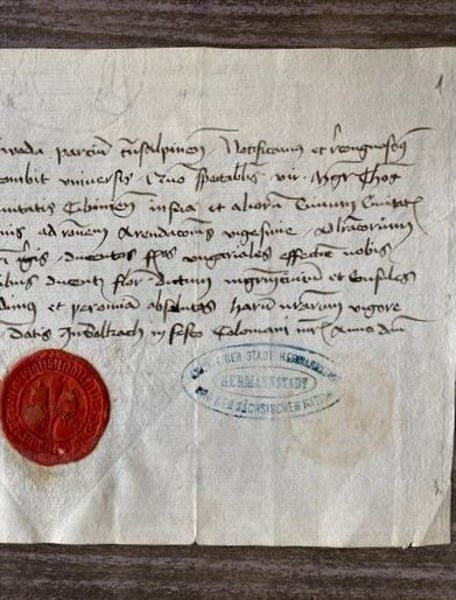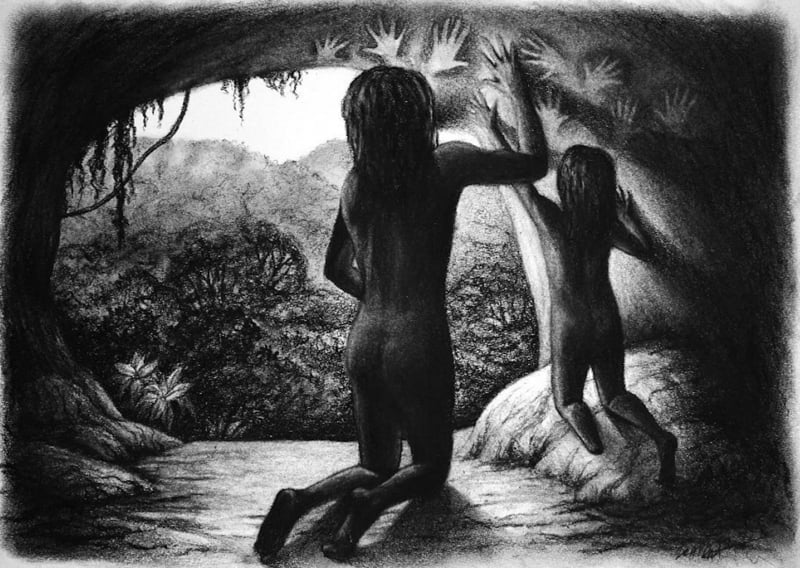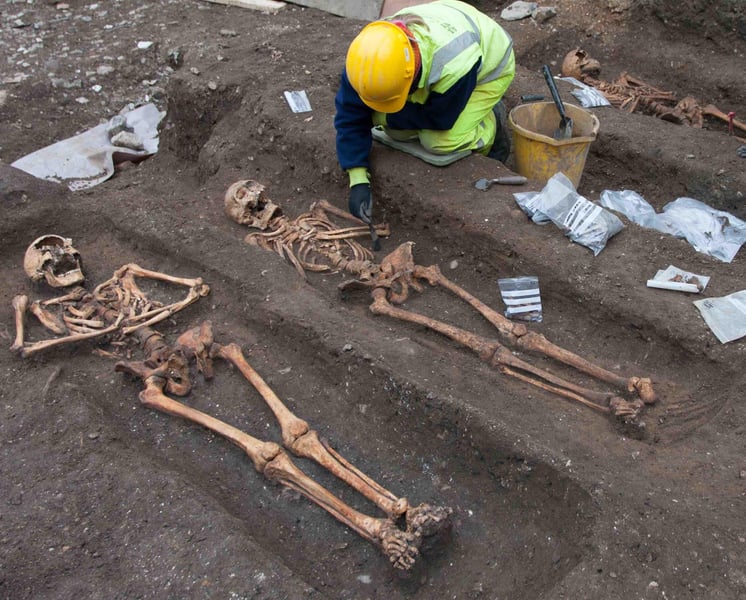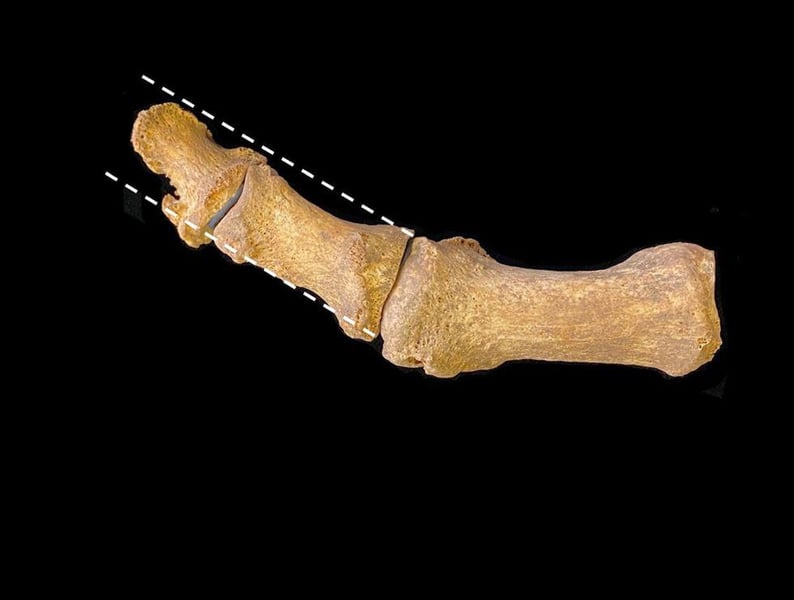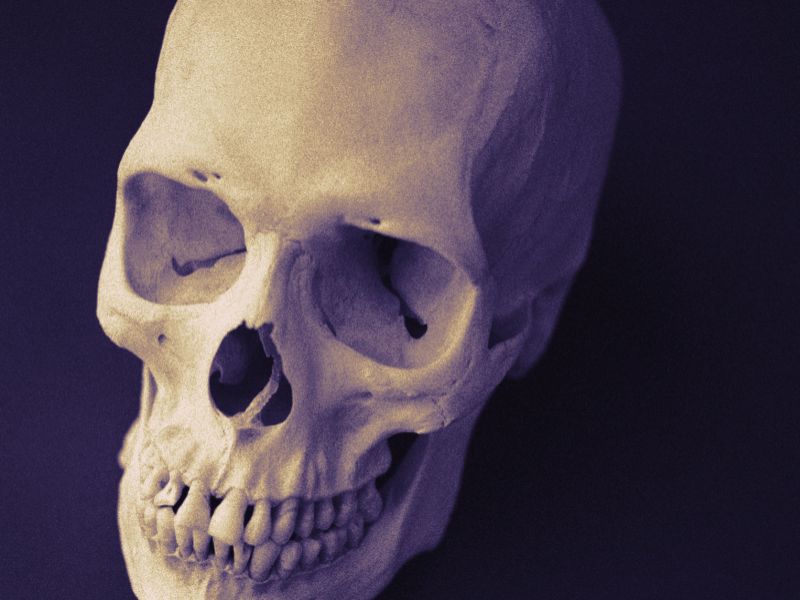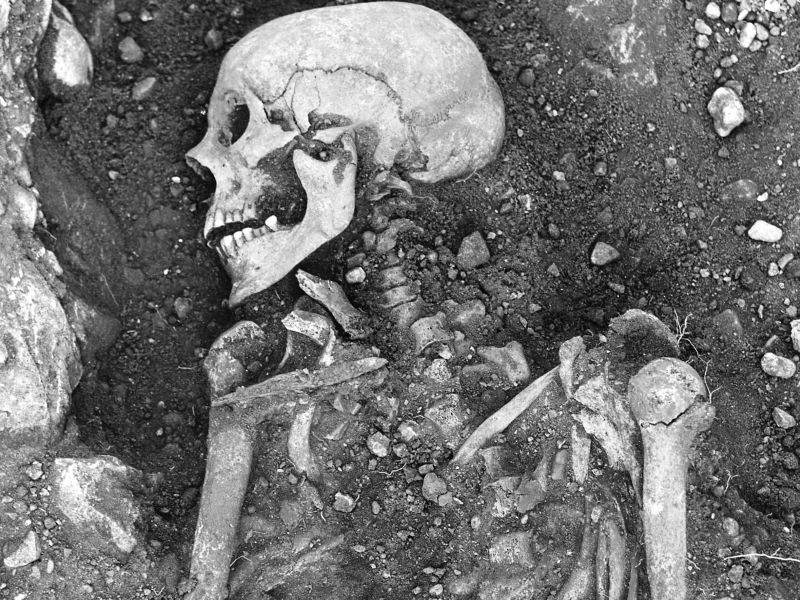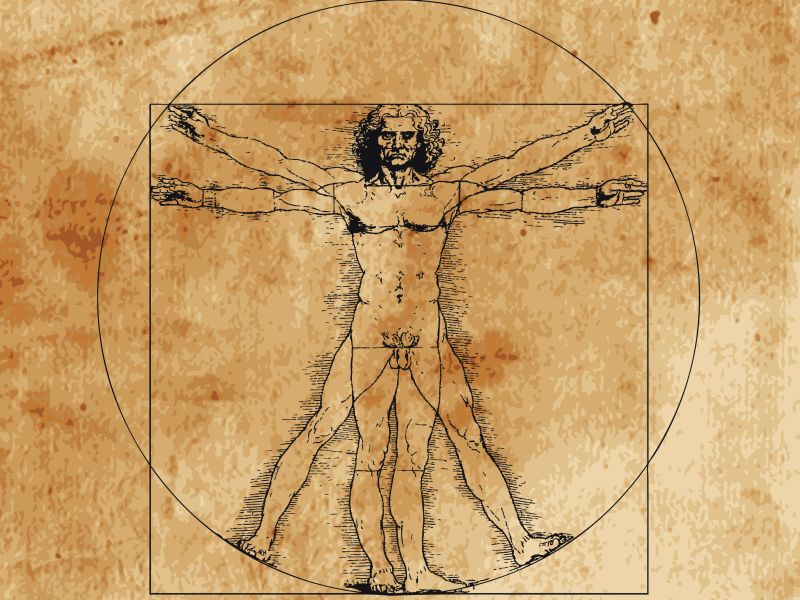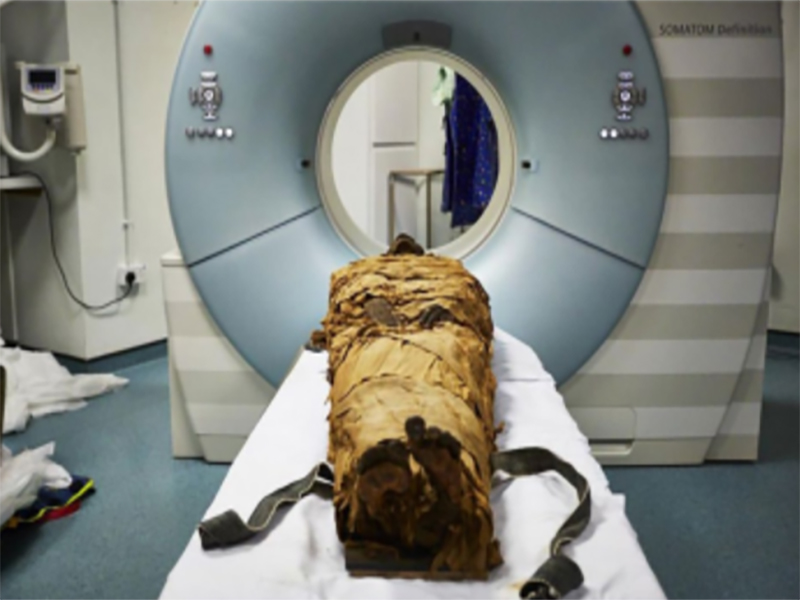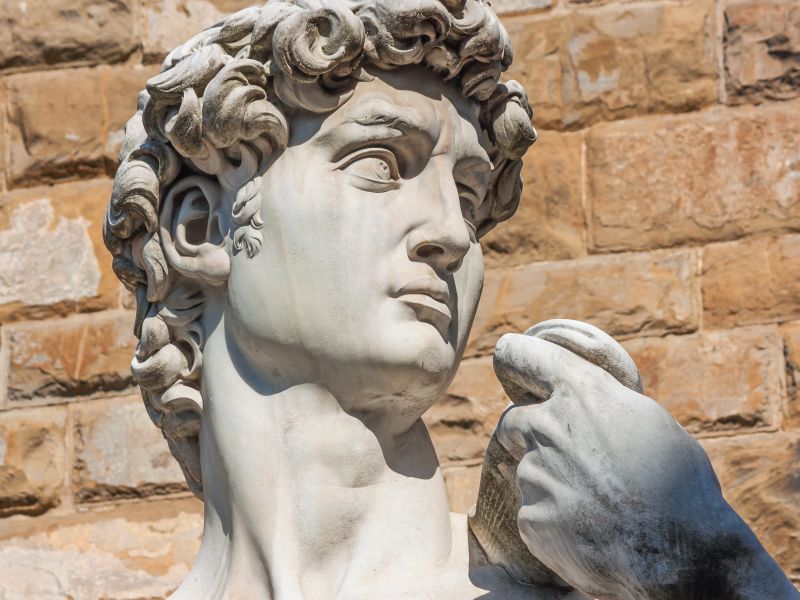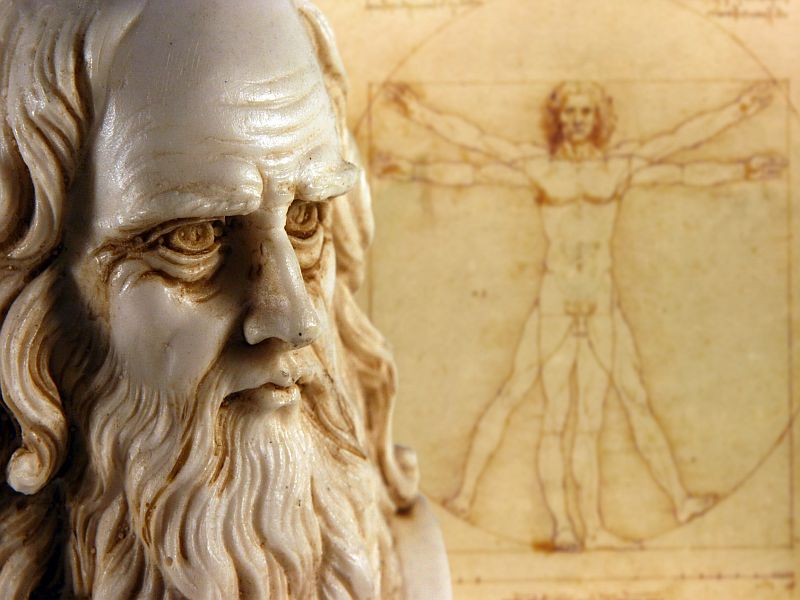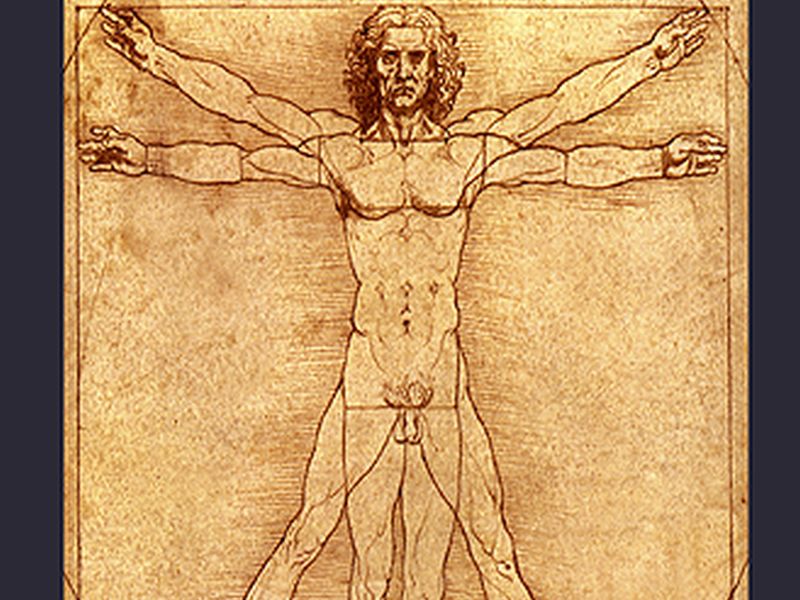Manténgase sano!
Resultados de su búsqueda "History of Medicine".
Resultados de noticias de salud - 30
A 4,000-year-old skull provides evidence that ancient Egyptians might have tried to treat cancer, a new study claims.
Microscopic observation of the skull revealed 30 or so lesions scattered across its surface that are consistent with cancer, researchers report.
T...
- Dennis Thompson HealthDay Reporter
- |
- May 29, 2024
- |
- Página completa
Rare gene-driven defects such as Down syndrome have occurred among human beings for many thousands of years, a new analysis of ancient DNA has revealed.
Not only did the birth defects exist, but these infants were often buried with care by their community. That suggests they were included as part of the community despite their differences, researchers said.
Six cases of Down syndrom...
- Dennis Thompson HealthDay Reporter
- |
- February 21, 2024
- |
- Página completa
It has long been believed that the 1918 flu pandemic disproportionately affected healthy young adults, but a study of human remains tells a different story.
Together, Canadian and American researchers found that preexisting medical conditions like asthma and lower income increased the likelihood of death, just as in other pandemics, including COVID-19.
"Our circumstances -- soc...
- Cara Murez HealthDay Reporter
- |
- October 10, 2023
- |
- Página completa
The 15th century prince who inspired the literary vampire Dracula may have had medical issues that caused him to cry tears of blood, according to researchers unearthing this ancient mystery.
The prince, who was also a military leader, was known as Vlad III, Voivode of Wallachia and as Vlad the Impaler. He was also called Vlad Drăculea, translating to "the son of the dragon," and may be ...
- Cara Murez HealthDay Reporter
- |
- August 18, 2023
- |
- Página completa
Scientists have found evidence of ancient parasites preserved in the dung of an aquatic predator from more than 200 million years ago.
The ancient predator -- believed to be an extinct crocodile-like reptile called a phytosaur -- was infected with nematodes and multiple other parasite species.
While parasites are a common and important part of ecosystems, ancient parasites are hard ...
- Cara Murez HealthDay Reporter
- |
- August 10, 2023
- |
- Página completa
Cervical cells from Henrietta Lacks, a cancer patient who died more than 70 years ago, are a cornerstone of modern medicine, but her family has never been compensated for the cells taken without her knowledge.
Until now.
Thermo Fisher Scientific of Waltham, Mass., has settled a lawsuit filed in 2021 by the...
- Cara Murez HealthDay Reporter
- |
- August 1, 2023
- |
- Página completa
Genetic analysis of Ludwig van Beethoven's hair has provided new clues into the cause of the great composer's death in 1827 -- as well as evidence of a family scandal.
The analysis revealed that Beethoven suffered from a hepatitis B infection that could have contributed to his death from liver disease.
Researchers found DNA evidence of hepatitis B virus in a lock of hair taken from ...
- Dennis Thompson HealthDay Reporter
- |
- March 22, 2023
- |
- Página completa
While the origins of smallpox has remained a mystery for centuries, researchers now believe that it dates back 2,000 years earlier than previously thought.
Until recently, the earliest genetic evidence of smallpox, the variola virus, was from the 1600s. And in 2020, researchers found evidence of it in the dental remains of Viking skeletons, pushing its existence 1,000 years earlier.
- Cara Murez HealthDay Reporter
- |
- January 11, 2023
- |
- Página completa
That special link you may have with a purring, four-legged friend has been going on between the species for millennia, new research shows.
The human-cat relationship was probably forged over a shared interest in rats more than 10,000 years ago, investigators say. As farming became a way of life, cats served as ancient pest control, killing rodents and making a bond with people that contin...
- Cara Murez HealthDay Reporter
- |
- December 8, 2022
- |
- Página completa
A "virtual autopsy"of a mummified 17th century Austrian infant has shed new light on Renaissance childhood -- as well as the importance of vitamin D to health.
The researchers used CT scans to examine the remains, which had been found in an aristocratic Austrian family crypt containing the perfect condit...
- Dennis Thompson HealthDay Reporter
- |
- October 26, 2022
- |
- Página completa
Skeletal remains of a young adult discovered in a remote cave in Borneo appear to be the oldest known case of surgical amputation.
Australian and Indonesian researchers estimate the bones are at least 31,000 years old. It appears that the young adult lost his foot and lower leg in childhood and lived for at least six to nine more years after that, they said.
"
Medieval monks were much more wormy than average folks, a new archaeological analysis has revealed.
Those living in medieval Cambridge were nearly twice as likely to be infected by intestinal parasites as city dwellers, researchers found.
Even though Augustinian friars had access t...
- By Dennis Thompson HealthDay Reporter
- |
- August 19, 2022
- |
- Página completa
Researchers have long suspected that humans evolved to tolerate dairy products in order to reap their health benefits. Now a new study refutes that idea.
Around one-third of the world's population possesses a gut enzyme that allows them to digest lactose, a sugar in milk. Those lucky individuals -- mostly of European heritage -- can feast on dairy products without suffering digestive woes...
- Amy Norton HealthDay Reporter
- |
- July 27, 2022
- |
- Página completa
A centuries-old mystery as to the origins of the Black Death has been solved, according to an international team of scientists.
They said the plague pandemic that killed up to 60% of people in Europe, the Middle East and northern Africa in the mid-1300s originated in central Asia in what is now Kyrgyzstan.
Plague first entered the Mediterranean in 1347 on trade ships from the East. ...
- By Robert Preidt HealthDay Reporter
- |
- June 15, 2022
- |
- Página completa
Suffering for fashion is nothing new. Researchers in the United Kingdom have unearthed new evidence that stylish pointed shoes caused a "plague" of bunions in the late medieval period.
Investigators from the University of Cambridge analyzed 177 skeletons from cemeteries in and around the city of Cambridge. Included were a charitable hospital, the grounds of a former Augustinian friary wh...
- Cara Murez
- |
- June 11, 2021
- |
- Página completa
Not only have humans and their ancient ancestors been eating carbs for longer than was realized, but a new study finds these starchy foods may actually have played a part in the growth of the human brain.
A new study researching the history of the human oral microbiome found that Neanderthals and ancient humans adapted to eating starchy foods as far back as 100,000 years ago, which is mu...
- Cara Murez
- |
- May 12, 2021
- |
- Página completa
Cancer might seem like a modern problem, but new research has revealed that it affected up to 14% of adults in medieval Britain.
University of Cambridge researchers used X-rays and CT scans to search for evidence of cancer inside skeletal remains excavated as part of an ongoing study of medieval life.
The investigators found rates of cancer about 10 times higher than had been previ...
- Cara Murez
- |
- April 30, 2021
- |
- Página completa
In medieval Europe, when childbirth was highly perilous for both mother and child, women and those caring for them used various talismans to try to influence a safe delivery.
Not many of those relics have survived, but scientists have been studying one -- a parchment "birthing girdle" -- using non-invasive sampling and protein analysis.
"Although these birth girdles are thought to h...
- Cara Murez
- |
- March 12, 2021
- |
- Página completa
Modern technology has unraveled an ancient mystery about the death of an Egyptian king.
Computed tomography (CT) scans of the mummified remains of Pharaoh Seqenenre Taa II, the Brave, revealed new details about his head injuries not previously found in examinations since his mummy was discovered in the 1880s. Those examinations, including an X-ray study in the 1960s, had found that the k...
- Cara Murez
- |
- February 25, 2021
- |
- Página completa
Medieval plague outbreaks in England picked up frightening speed in the 17th century, Canadian researchers report.
Their analysis of historical documents covering 300 years showed that outbreaks of the plague doubled every 11 days in London during the 1600s, compared to every 43 days in the 14th century.
"It is an astounding difference in how fast plague epidemics grew," sai...
- Cara Roberts Murez
- |
- October 19, 2020
- |
- Página completa
The Vikings had smallpox and may have spread it wherever they ventured, scientists report.
That conclusion stems from an examination of teeth from 1,400-year-old Viking skeletons that contained extinct strains of smallpox. The genetic structure of those strains differed from that of the modern smallpox virus eradicated in the 20th century, the researchers found.
"We already...
- Steven Reinberg
- |
- July 24, 2020
- |
- Página completa
Scientists who have identified the early smallpox strains used to create vaccines against the disease say this type of genetic research could help efforts to develop a vaccine against the new coronavirus.
Smallpox was among the most dangerous viral diseases in human history, killing about three of every 10 people who were infected. Many of those who survived were disabled, blind or di...
- Robert Preidt
- |
- July 21, 2020
- |
- Página completa
More than five centuries ago, Renaissance master Leonardo da Vinci produced a now-famous image of what he considered the perfectly proportioned male body: the "Vitruvian Man."
The drawing was inspired by even earlier pondering on the perfect human form by first-century A.D. Roman architect Vitruvius.
Now, work done by American scientists involving high-tech scans of the bod...
- E.J. Mundell
- |
- June 10, 2020
- |
- Página completa
The virus struck swiftly, stoking panic, fear and mistrust as it sickened millions and killed thousands -- and now, more than a century later, the 1918 Spanish flu pandemic offers lasting lessons for a world in the grip of COVID-19.
"The questions they asked then are the questions being asked now," said Christopher Nichols, an associate professor of history at Oregon State University...
- Alan Mozes
- |
- April 20, 2020
- |
- Página completa
Nesyamun, an Egyptian priest who chanted hymns at the grand temple of Karnak in Thebes 3,000 years ago, has been allowed to speak once more.
Well, maybe not speak in full sentences: A British team has re-created the mummified Nesyamun's throat using 3-D technology, allowing it to utter a vowel they believe mimics how the priest sounded.
Here it is:
The cataclysmic eruption of Mount Vesuvius in 79 A.D. created temperatures so hot that one poor soul's brain was transformed into glass, researchers report.
Archaeologists working at the site of Herculaneum -- the other city wiped out in the eruption, alongside Pompeii -- discovered small bits of black glass inside the skull of one of the victims.
Tests of the glassy materia...
- Dennis Thompson
- |
- January 22, 2020
- |
- Página completa
Michelangelo's David is perhaps the world's most famous statue, gazed upon by millions over centuries.
And yet it's only this year that an American doctor has spotted an anatomical insight made by the artist -- one that's passed without notice on David for more than 500 years.
In the vast majority of sculptures, and in the everyday physiology of living people, the jugular ve...
- E.J. Mundell
- |
- December 26, 2019
- |
- Página completa
Leonardo da Vinci's legendary struggles to complete projects suggest he may have had attention-deficit hyperactivity disorder (ADHD), a British researcher says.
That's the latest in a series of attempts to understand the genius and work habits of an inventor and artist often considered the most creative person ever known.
The fascination with da Vinci dovetails with the 500t...
- Robert Preidt
- |
- May 24, 2019
- |
- Página completa
A fainting-related fall that caused nerve damage in his right hand could explain why Leonardo da Vinci's painting skills declined later in life, a new paper suggests.
The report, published as the world marks the 500th anniversary of the artist's death, contradicts the common belief that da Vinci's difficulties stemmed from a stroke.
To arrive at that conclusion, the report a...
- Robert Preidt
- |
- May 6, 2019
- |
- Página completa
Leonardo da Vinci was an atrocious speller, a sure sign of dyslexia, but it's possible that very disorder fueled his genius, a researcher says.
May 2 marks the 500th anniversary of the death of da Vinci, an inventor and artist regarded by many as the most creative person ever known.
"Dyslexia is probably one of the things that made da Vinci so creative, made him Leonardo," s...
- Robert Preidt
- |
- May 2, 2019
- |
- Página completa



